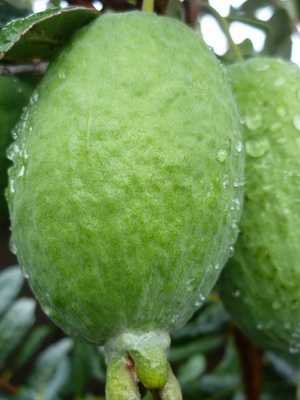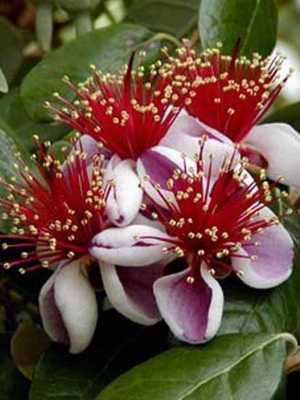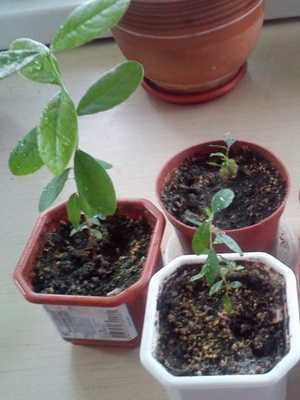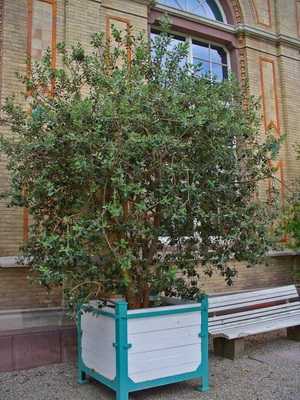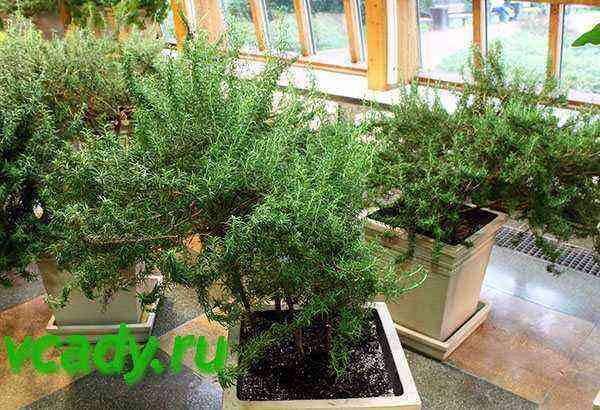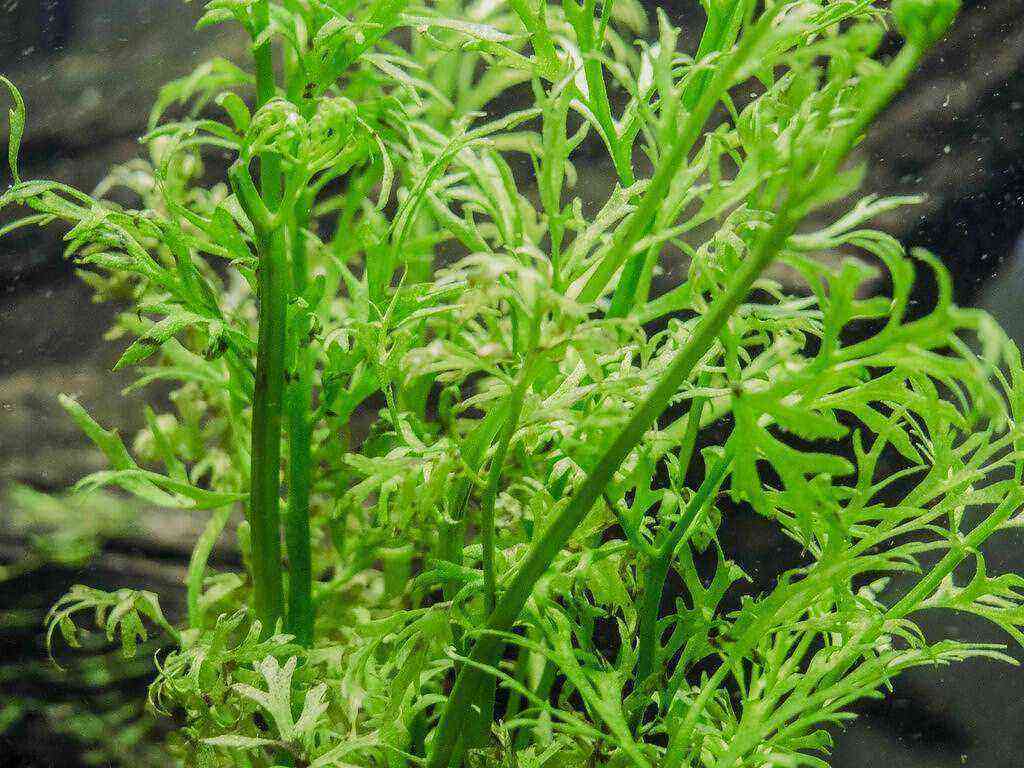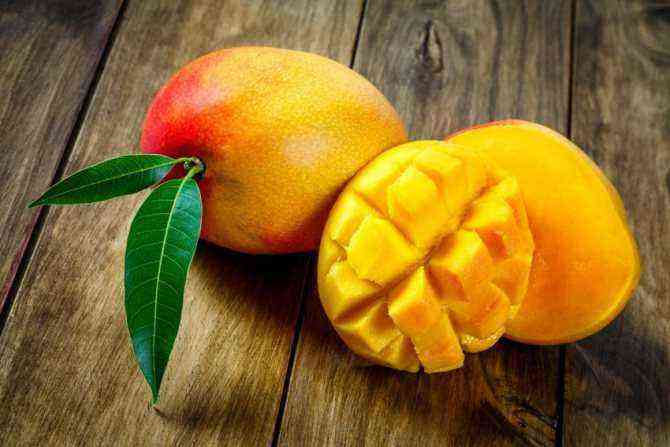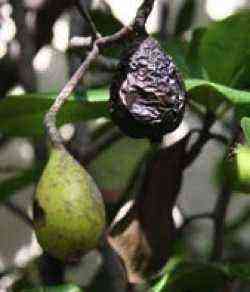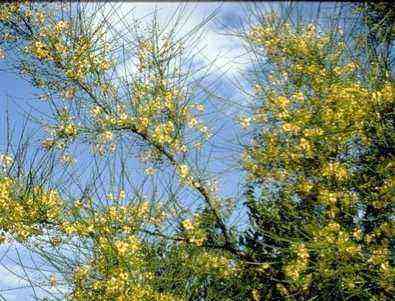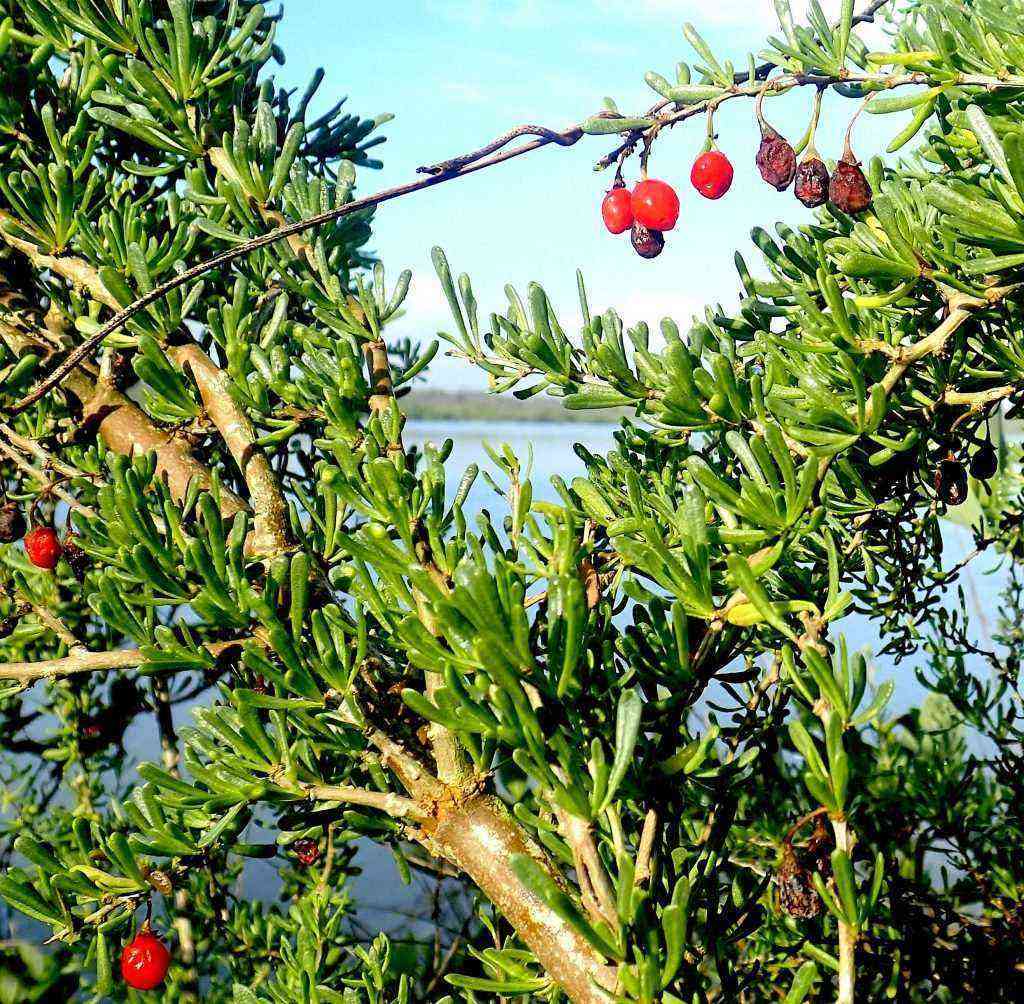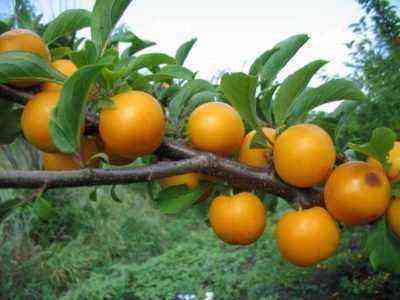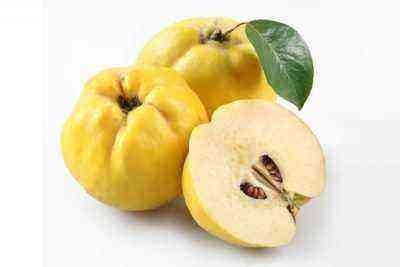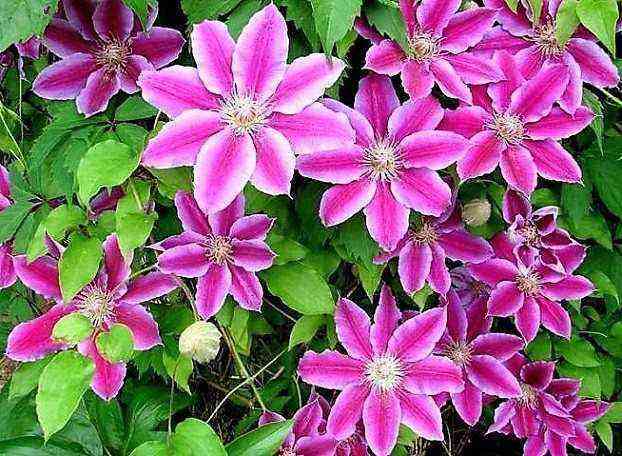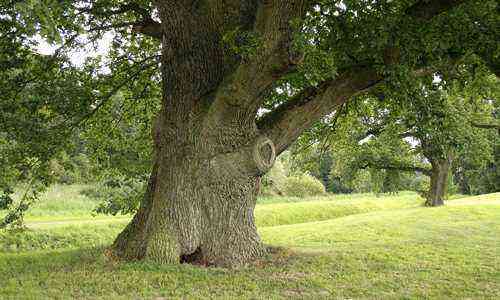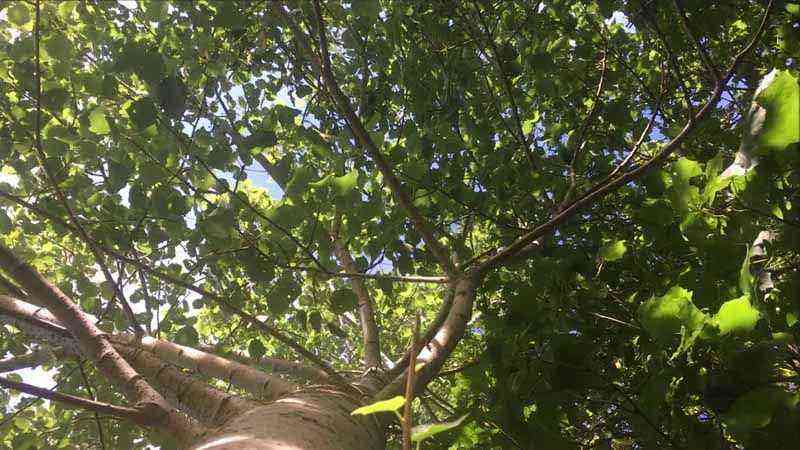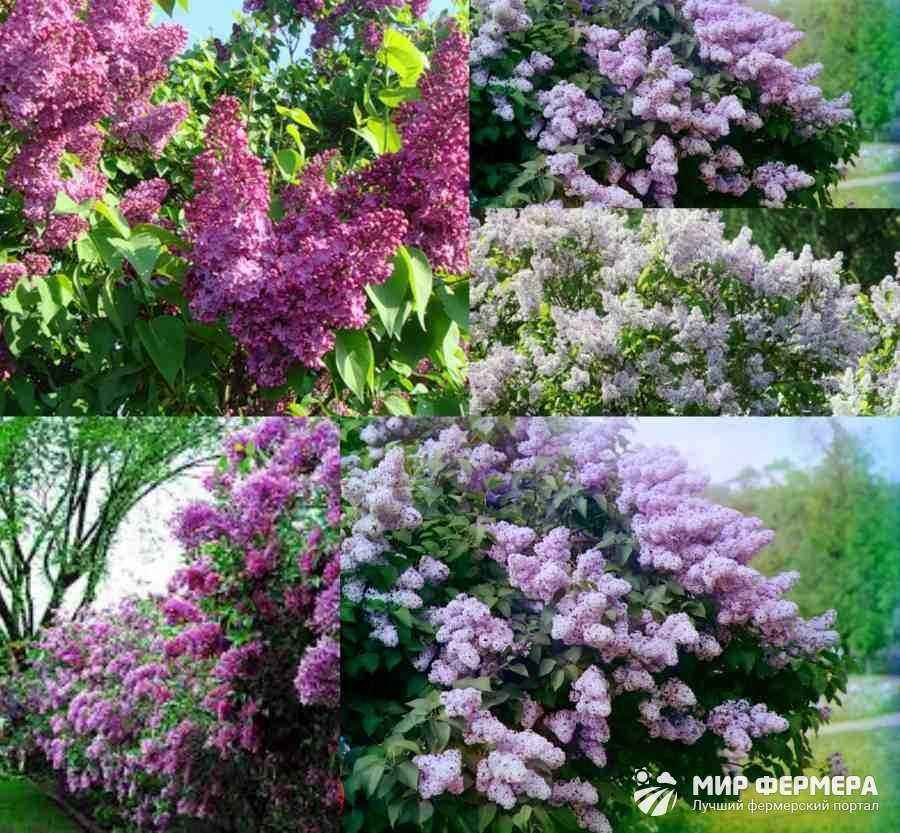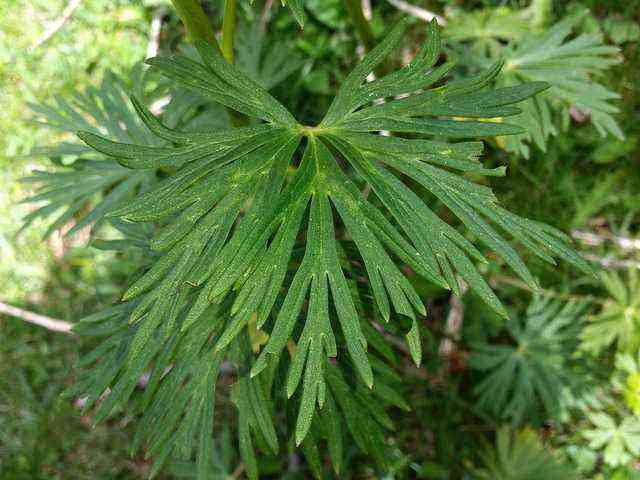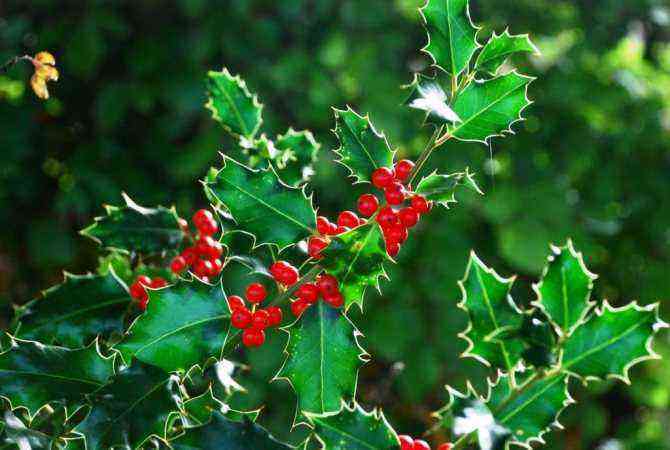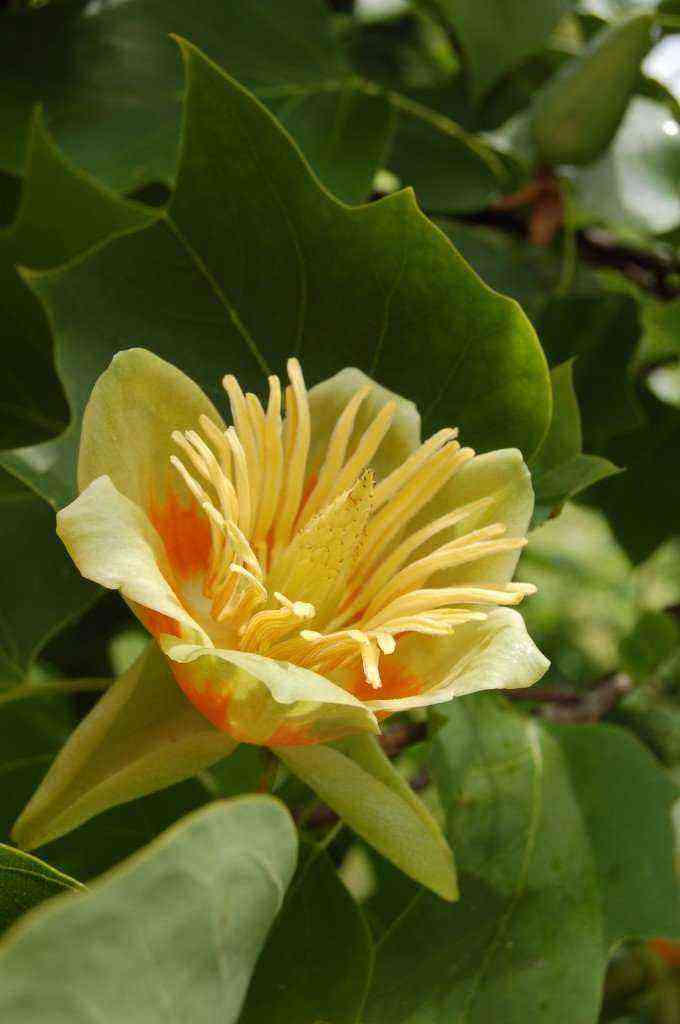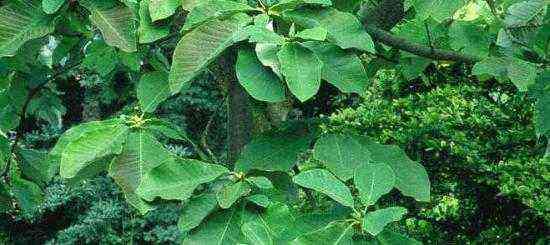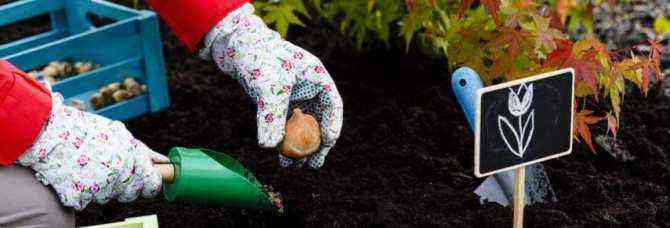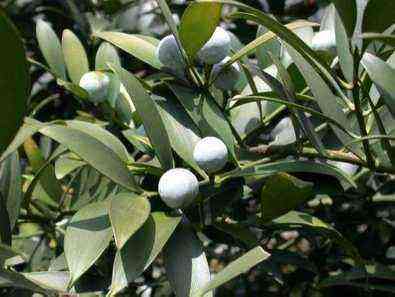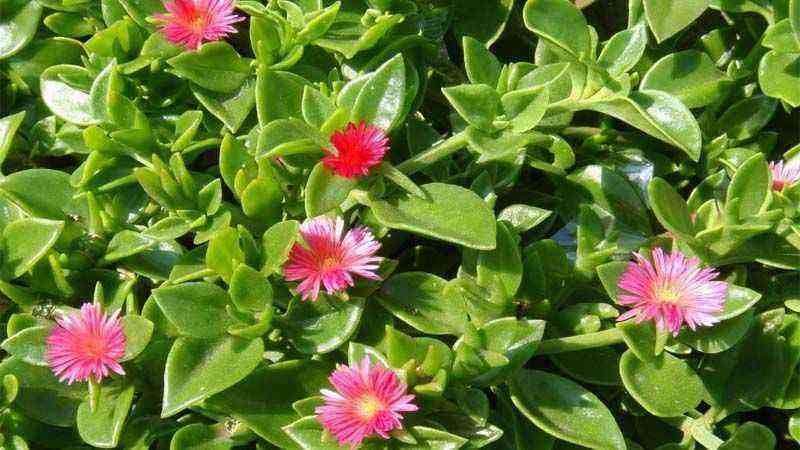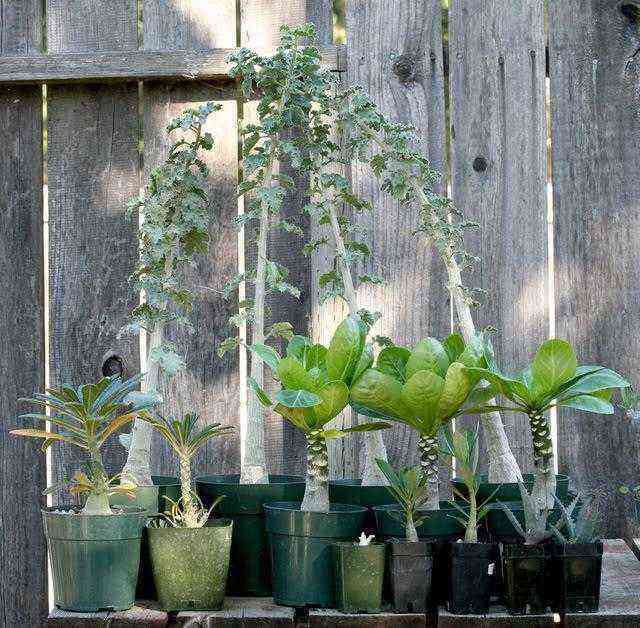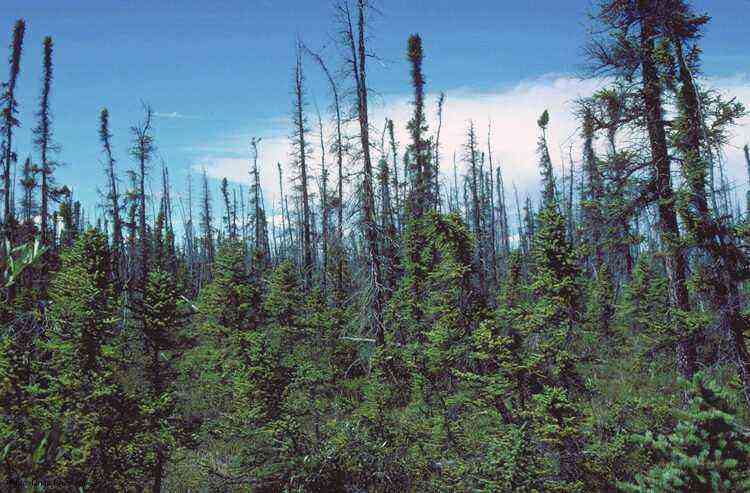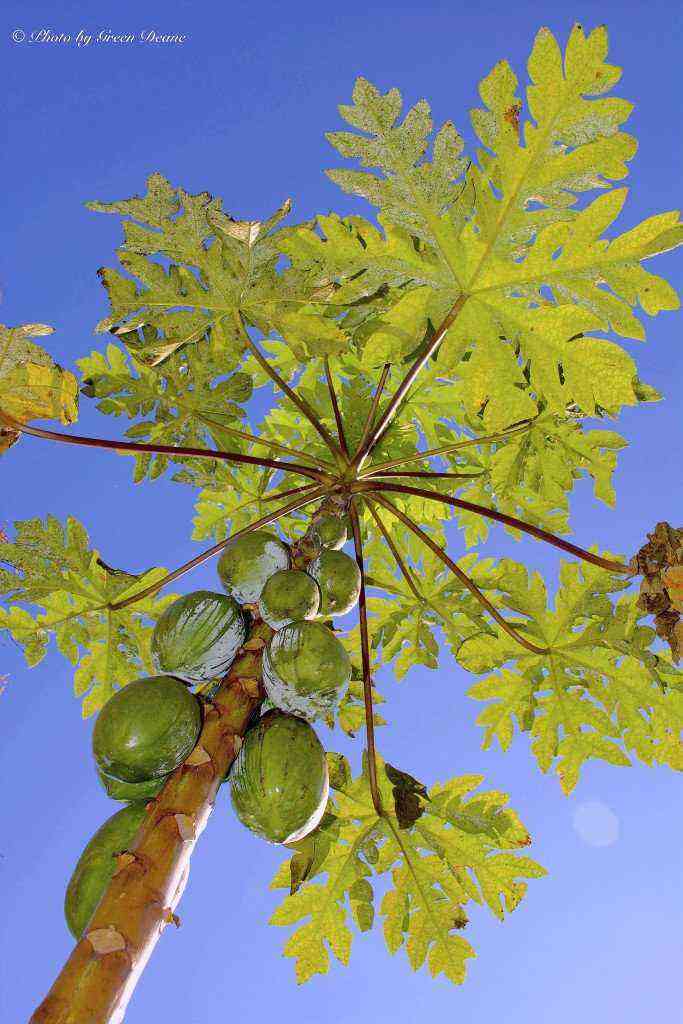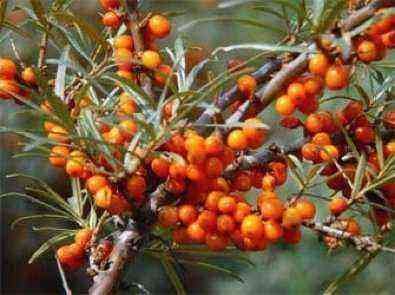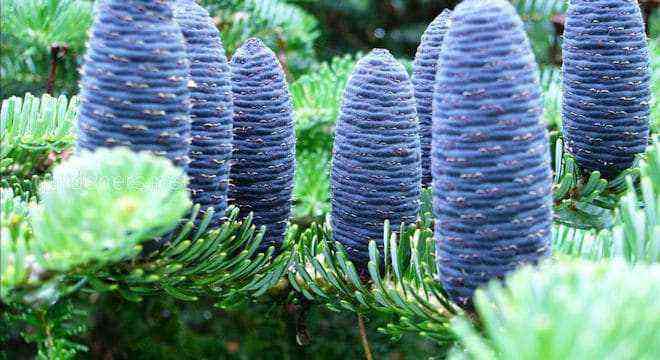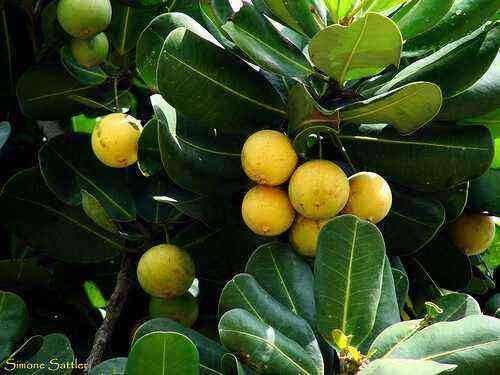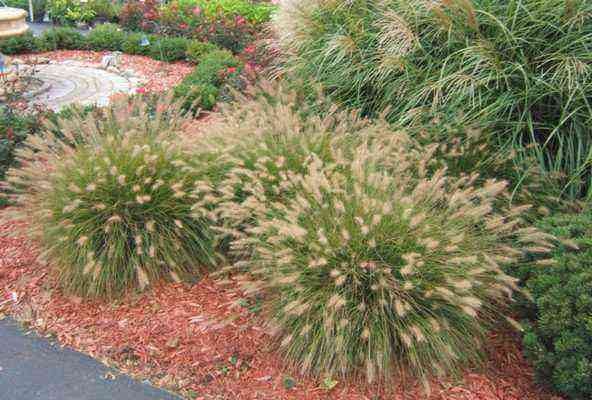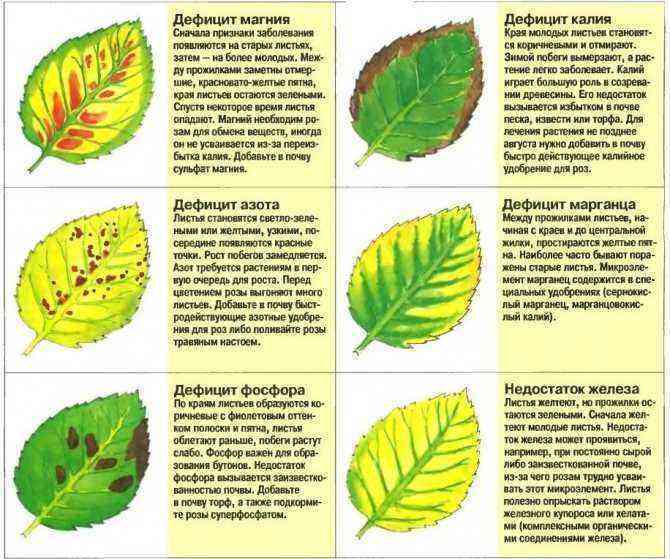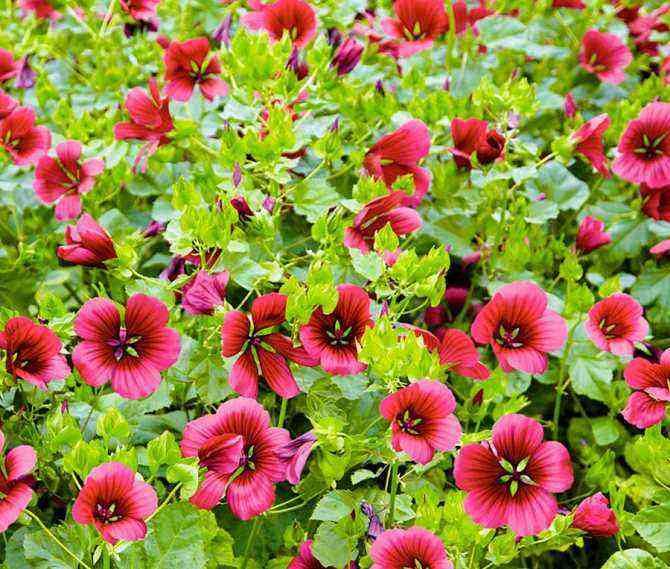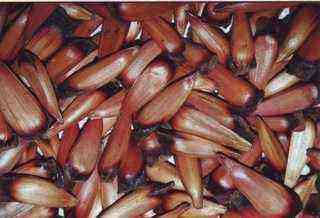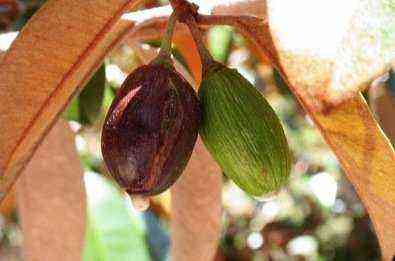
How feijoa grows and blooms, what its fruits look like (with photo and video)
Fejxoa (Feijoa) belongs to the Myrtle family, native to South America, where it grows as an undergrowth in tropical forests.
Feijoa is home to subtropical regions in South America: southern Brazil, northern Argentina, Paraguay, Uruguay. In the wild, this plant is common in the forests of South America as an underbrush. It is a typical subtropical plant and all attempts to cultivate feijoa in the tropics have failed. This unique fruit and ornamental plant was first discovered in the middle of the last century by the botanist Sellov, from whose surname the specific name of the plant comes. And the generic name of feijoa comes from the name of the director of the Museum of Natural History in San Sebastiano (Brazil) – Joani de Silva Fejio.
It is a small evergreen shrub with oval leaves, pale green on the upper side and silvery gray below, pubescent. The bark is rough, light brown. The plant deserves special attention at the time of flowering, when very beautiful, bisexual pink flowers with bright crimson stamens, fleshy petals appear on its branches. Long bloom (May – June). Feijoa blooms on the shoots of the current year.
As you can see in the photo, feijoa fruits are oblong green berries with a slightly bumpy surface, weighing 30-40 g:
There are varieties with larger fruits – up to 120 g. Their taste is reminiscent of both pineapple and strawberries.
Feijoa Sellova (F. selloviana), or akka (Assa selloviana), Is the only species grown in the subtropics of Russia. In more northern regions, the plant can be grown indoors.
In terms of frost resistance, it is much superior to citrus fruits and painlessly tolerates temperatures as low as -10 ° C.
These photos show how feijoa blooms:
The shrub is suitable for landscaping winter gardens, greenhouses, residential and office buildings. It is grown on the Black Sea coast as a fruit plant. Feijoa fruits are used fresh, and they are also used to prepare unique jams, juices, jams, and wines. Fine liqueurs are obtained from flower petals.
Feijoa is famous for the special taste of its fruits and their medicinal and dietary properties.
When describing feijoa, one cannot fail to note the main advantage of this plant – the rounded fruits of a bright green color, unique in taste and aroma, ripening in November. Their average weight reaches 30–50 g. Feijoa fruits combine the taste of strawberries and pineapple and contain many vitamins, primarily ascorbic acid, as well as organic acids, a large amount of pectins, etc. The pulp contains iodine, the taste of which is clearly felt.
Feijoa fruits contain: 5,12-10,46% sugars, 1.5-3,6% malic acid, about 2,5% pectin, 2.06-3,9 mg iodine per 1 kg. The fruits are used in fresh and processed (jam, wine) form; they are stored for no more than a month. In home cooking, feijoa fruits are consumed fresh, they can be rubbed with sugar in a 1: 1 ratio and stored in the refrigerator. Feijoa can be used to make preserves and jams, prepare compotes, and preserve juices. Feijoa is eaten fresh, peeled from the skin.
Doctors recommend using feijoa for thyroid diseases and atherosclerosis. It is also useful to eat feijoa for gastritis, vitamin deficiency. Patients with atherosclerosis are advised to eat berries rubbed with granulated sugar or boiled. In dermatology, doctors use the oil made from the fruit as an anti-inflammatory drug.
Here you can see a photo of what the feijoa looks like at the time of fruiting:
Conditions for growing feijoa from seeds at home (with video)
Feijoa is propagated by seeds. Seeds are sown in January – March to a depth of 0,3–0,5 cm. The first shoots appear in 20 weeks at a substrate temperature of 25–2 ° C.
At home, the easiest way to get seedlings of this plant. For cultivation of feijoa, seeds are extracted from fully ripe, freshly harvested fruits. In overripe and long-stored plants, the seeds are often germinated and not suitable for sowing. To extract them, with a sharp knife it is necessary to cut off about 1/5 of the fruit from the side of the stalk, carefully squeeze out the jelly-like pulp, in which there are a few seeds. Then rinse them in a weak solution of potassium permanganate (potassium permanganate), trying to completely remove the sticky pulp. The selected seeds are dried. Sowing and caring for seedlings is the same as for most fruiting plants.
Although grafting is a more reliable way to maintain the qualities of the mother plant, it is usually less commonly used for propagation of feijoa.
Feijoa can also be propagated by grafting and root shoots. But the vaccination was almost not widespread due to the thin bark and the poor engraftment of the eyes during budding. Shoot propagation is mainly used in industrial horticulture. Good results are obtained by aerial rooting of branches of a fruiting tree.
Next, you will learn about the conditions for growing feijoa at home.
Location. Feijoa is a light-loving culture, so it is best to place it on the south or southeast window. In the autumn-winter period, the plant sheds quite a lot of leaves. To exclude this phenomenon, additional lighting is necessary.
Temperature. Mature plants can withstand temperatures down to -12 ° C and are drought-resistant. In winter, the plant is best kept in a cool, bright room with a temperature of 8-12 ° C. In summer, it is good to take out to the garden or balcony.
The soil. The plant is undemanding to soil conditions, an ordinary flower substrate is suitable.
As shown in the photo, for a feijoa tree, the best substrate is a medium alkaline flower soil:
In the first 2-3 years, due to the active growth of the root system, the transplant should be carried out annually. When transplanting, it is imperative to keep the soil ball and not to deepen the plant. Subsequently, the transplant should be done once every 3 years.
Watering. Feijoa is a moisture-loving plant. Overdrying an earthen coma leads to loss of leaves, drying of branches and part of the root system. After watering, the water accumulated in the pan is not removed – after a while it will be absorbed into the earthen lump. In winter, when the air humidity in the house is low, it is useful to spray the plant with lukewarm water when caring for the feijoa. Plentiful watering is recommended in summer, moderate in winter.
Feeding. Feijoa is very picky about feeding during flowering and fruit setting. Feijoa is fed every 15 days throughout the year, alternating between nitrogen, phosphorus and potassium. Horse manure (1:10), superphosphate and ash extract are used. Superphosphate is poorly soluble in water, so first 1 teaspoon of fertilizer should be boiled in 1 liter of water. The cooled solution is diluted with water in a 1: 1 ratio. To obtain potassium fertilizer, 1 tablespoon of deciduous ash is infused for 1 week in 1 liter of water. Before feeding, the plant is watered with plain water.
Transfer. In the first 2-3 years, the feijoa should be transplanted into fresh nutrient substrate annually. Adult plants are transferred into a large bowl, filling only the space between the walls of the pot and the root ball with fresh substrate. The roots emerging from the drainage hole should be pruned.
For fruit to set, you must have two plants that must bloom at the same time. This is difficult to achieve in indoor conditions. It is better to grow parthenocarpic (self-pollinating) varieties in the house, such as Krymsky early or Nikitsky aromatic. Feijoa seedlings begin to bear fruit in the 5-6th year, and the trees obtained from rooted cuttings – in the 4th. The fruits ripened in the room are no different from those grown in the garden.
Diseases and pests. The most common pests are scale insects, worms, and from diseases – gray rot and leaf spot.
After reviewing the photo and description of feijoa care, it is important to learn about the correct formation of shrubs.
Pruning feijoa shrub: photo and description
Feijoa plants undergo minimal shaping and pruning, and in practice, in the subtropics of Russia, they are cultivated without any pruning. Feijoa should be formed as follows: after planting in a permanent place, and it is best to plant 2-year-old seedlings, they shorten 1/3 of the entire aboveground part. At a young age, the plants bear fruit well and give a high yield.
Pay attention to the photo – in the feijoa shrub, with age, the lower skeletal branches strongly bend and become almost creeping or semi-creeping and, accordingly, weakly productive and low-decorative:
On such bushes, the yield is sharply reduced, and work on care and harvesting becomes difficult.
Research by scientists has shown that the most suitable way to prune feijoa is a way in which the plant is given a low-stem shape. It is carried out for 3 – 4 years. In this case, in the first year in March, you should cut off all the main stems 30 – 45 cm from their base to create the main skeleton, and remove all weak growths from the bottom of the bush on the ring. As a result of such pruning in July – August, well leafy shoots are formed, from which one strong shoot is selected and shortened by 15 – 20 cm.
On the 2nd-3rd year, the lateral growths (future skeletal branches), located above the trunk, are left at a distance of 30-40 cm from each other in a spiral. The branching angles from the trunk should be 45 – 60 °, and between the branches – 90-120 °.
In some forms of feijoa, which are characterized by strong growth and a tendency to form a too spreading crown, the shoots are cut to V3 lengths. In subsequent years, the crown of the formed bushes is only periodically thinned out, while the fatty and damaged shoots are cut off.
In winter gardens and other enclosed spaces, with poor ventilation and insufficient lighting, the crown thickens rapidly. In this case, it should be periodically thinned out, removing weakened and diseased shoots.
See how the feijoa is cropped in the photos below:

